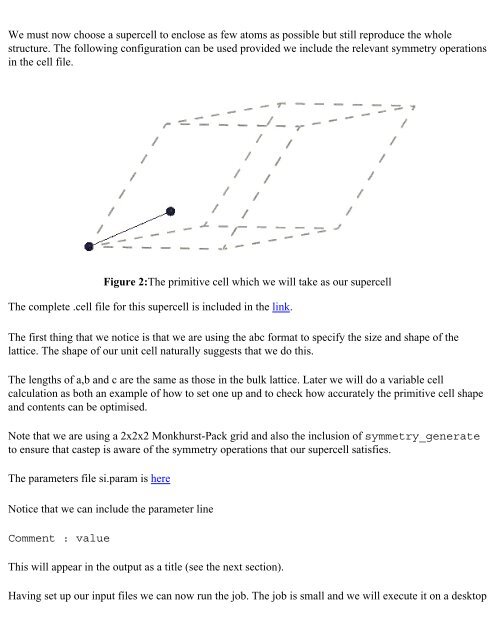Geometry Optimisation with CASTEP
Geometry Optimisation with CASTEP
Geometry Optimisation with CASTEP
Create successful ePaper yourself
Turn your PDF publications into a flip-book with our unique Google optimized e-Paper software.
We must now choose a supercell to enclose as few atoms as possible but still reproduce the whole<br />
structure. The following configuration can be used provided we include the relevant symmetry operations<br />
in the cell file.<br />
Figure 2:The primitive cell which we will take as our supercell<br />
The complete .cell file for this supercell is included in the link.<br />
The first thing that we notice is that we are using the abc format to specify the size and shape of the<br />
lattice. The shape of our unit cell naturally suggests that we do this.<br />
The lengths of a,b and c are the same as those in the bulk lattice. Later we will do a variable cell<br />
calculation as both an example of how to set one up and to check how accurately the primitive cell shape<br />
and contents can be optimised.<br />
Note that we are using a 2x2x2 Monkhurst-Pack grid and also the inclusion of symmetry_generate<br />
to ensure that castep is aware of the symmetry operations that our supercell satisfies.<br />
The parameters file si.param is here<br />
Notice that we can include the parameter line<br />
Comment : value<br />
This will appear in the output as a title (see the next section).<br />
Having set up our input files we can now run the job. The job is small and we will execute it on a desktop
















